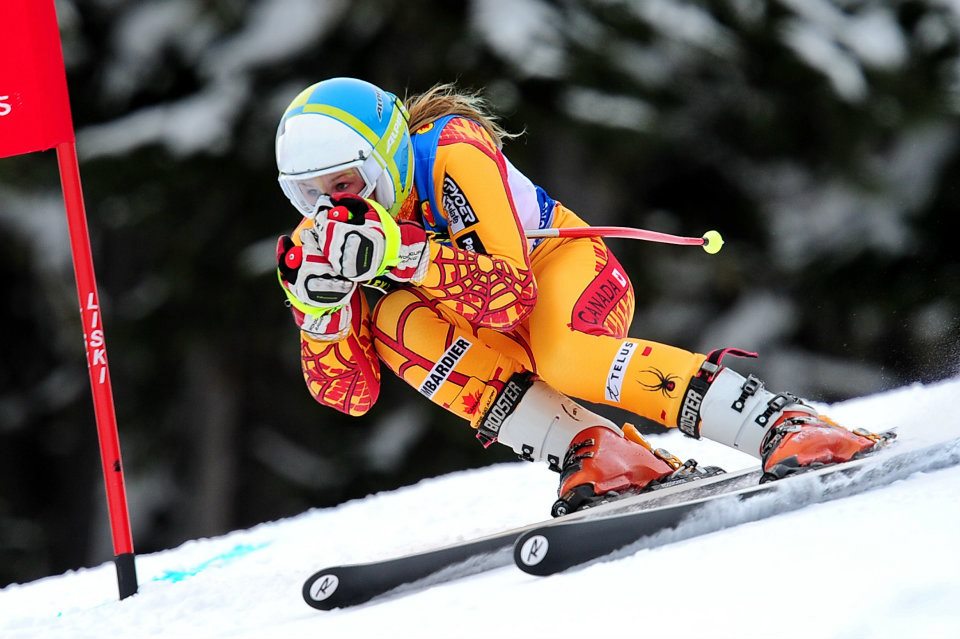Train to Train
BUILD THE SKI RACER
The train to train stage is the gateway for several opportunities including the transfer of learned skills, entry into the Podium Pathway or transition into the Ski for Life stage. Ski racers in the Train to Train stage are focused on transferring fundamental technique and basic tactical skills into the competitive environment. Ski racers are introduced to a variety of critical race elements from start to finish including movement over terrain and gliding. Ski racers begin formalized speed and ski cross training progressions to develop their skill sets in these areas.
While ski racers start competing more seriously, the primary focus during competition is on applying what they've learned in training and not on winning at all costs.
- Boys 12-16
- Girls 11-15
- Adolescent Growth Spurt
- Rising Stars
- Club Level
- Local & Provincial level events
- National Championships
- Beginning International FIS events

Key Concepts
- A critical stage in the development of high-performance ski racers.
- The train to train stage is the gateway for several opportunities including the transfer of learned skills, entry into the Podium Pathway or transition into the Ski for Life stage.
- Competition becomes more important with ski racers spending about 40% of their time racing and 60% of their time on snow training for competition and refinement of foundational technical skiing skills.
- Too much competition can waste valuable training time, but too little competition can slow the learning of technical and tactical decision making skills in competition. Create environments that promote the adaptation of technical skiing skills in tactical situations.
- Dedicating time during training to practice the foundational technical skiing skills in a free ski environment is strongly encouraged for ski racers seeking to become high-performance ski racers.
- Implement a regular, periodized training and competition plan using single or double periodization.
- Ski racers will begin their major growth spurt during and through this stage. The beginning of the rapid growth period can vary widely from individual to individual. The physical, mental and emotional maturity of individuals will develop at different rates.
- The start of the growth-spurt, Peak-Height Velocity (PHV) and menarche are essential markers to identify sensitive periods of accelerated adaption to training and inform what is developmentally appropriate.
- Careful monitoring of athlete growth and response to training will enhance the development of a plan.
- Physical fitness becomes a priority at this stage. Stamina, endurance, is essential to provide the ski racer with the ability to complete prolonged and frequent training sessions.
- Aerobic, Anaerobic, Strength and Power trainability depend on the maturation level of the ski racer.
- Use physical literacy movement preparation as part of warm-ups and assess and remediate gaps in physical literacy or muscular imbalances.
- The incorporation of basic mental skills training to develop their athletic character should continue. Ski racers need to learn how to cope with the physical and mental challenges of competition.
- During this phase, there is a tremendous influence on behaviour from peer groups and possible tension between adults and adolescents.
- This is a critical stage for ski racers to understand the rules of sport, values and consequences of one's actions.
- Choosing proper equipment at this stage plays a pivotal role in a ski racers enjoyment of the sport. Equipment must be professionally fit and maintained in consultation with the ski racers club coach.
- Introduce athletes with a disability to specialized, performance-based para-alpine equipment.
- Provide a safe, developmentally appropriate and welcoming environments.
REFERENCES:
ACA LTAD Training and Competition Focus Matrix
ACA LTAD Training and Competition Volume Matrix
ACA LTAD SX Progression Matrix
ACA LTAD Para-Alpine Progression Matrix
Sport for Life - Long Term Development in Sport & Physical Activity 3.0. Higgs, Colin & Way, Richard & Harber, Vicki, Jurbala, Paul, Bayli, Istvan. (2019). Long-Term Development in Sport and Physical Activity 3.0. Canadian Sport for Life. ISBN: 978-1-927921-62-3.
Actively Engaging Women and Girls
Sport for Life No Accidental Champions: LTAD for Athletes
with a Disability (2nd Edition)
Sport for Life for all Newcomers to Canada
Sport for Life Aboriginal Long–Term Participant Development Pathway 1.1


